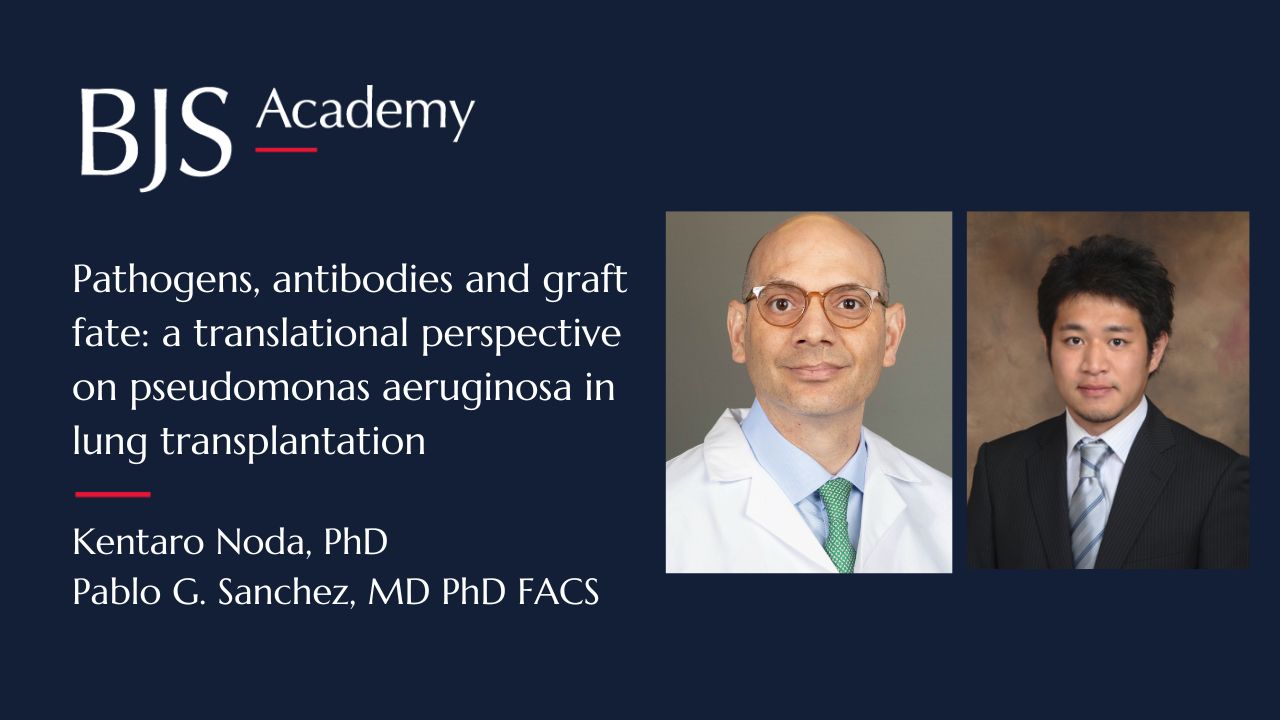BJS Academy>Surgical science>Faecal microbiota tr...
Faecal microbiota transplantation unravelled
Hugo Armand Roberto Sivov BA&Sc1, Florine Helene Zwezerijnen-Jiwa MD1,2,3, James Kinross MD, PhD1,*
1Department of Surgery and Cancer, St. Mary’s Hospital, Imperial College London, London W2 1NY, UK
2Tytgat Institute for Liver and Intestinal Research, Amsterdam Gastroenterology and Metabolism, Academic Medical Center, University of Amsterdam, 1105 BK Amsterdam, The Netherlands
3Department of Gastroenterology, Amsterdam Medical Centres, University of Amsterdam, 1105 AZ Amsterdam, The Netherlands
*Corresponding Author:
Dr. James Kinross, department of Surgery and Cancer, St. Mary’s Hospital, Imperial College London, 10th Floor QEQMW, Praed Street, London, W2 1NY, UK
Funding Sources: Marie-Skłodowska-Curie grant agreement no. 814168.
Related articles

Pathogens, antibodies and graft fate: a translational perspective on pseudomonas aeruginosa in lung transplantation
Kentaro Noda, PhD, Pablo G. Sanchez, MD PhD FACS
Article review: Liao F, Zhou D, Cano M, Liu Z, Scozzi D, Tague LK, et al. Pseudomonas aeruginosa infection induces intragraft lymphocytotoxicity that triggers lung transplant antibody-mediated rejection. Sci Transl Med. 2025;17:eadp1349.
Antibody-mediated rejection (AMR) is increasingly recognized as a major cause of lung allograft failure and post-transplant mortality.1While infection surveillance and immunosuppression regimens form the core of post-transplant management, the contribution of specific pathogens to immunologic rejection has often been underappreciated. Pseudomonas aeruginosa is known as one of the most commonly isolated gram-negative bacteria in the early postoperative period2 and was previously found to demonstrate its independent association with the development of donor-specific antibodies (DSAs) and a significant increase in acute rejection grade ≥ A2 among the lung transplant recipients.3 The study published in Science Translational Medicine by Liao et al.4 compels surgeons and transplant teams to consider the unique and direct immunological consequences of P. aeruginosa infection in lung transplant recipients, paralleling ongoing efforts to bring basic science insights to clinical practice.
In their work4, retrospective human cohort analysis and mechanistic mouse models were leveraged to explore the association and mechanism between P. aeruginosa infection and AMR after lung transplantation. Specifically, they demonstrated that post-transplant patients with frequent positive cultures of P. aeruginosa, especially those who were pre-diagnosed as cystic fibrosis, had a 2- to 5-fold increased risk of developing AMR, independent of other variables. The experimental approach using a mouse lung transplant model further revealed that P. aeruginosa uses its Type III Secretion System (T3SS), notably the ExoT exotoxin out of four exotoxins,5 to induce apoptosis of Foxp3+CD4+ regulatory T cells within bronchus-associated lymphoid tissue in transplanted lungs. This loss of local immune control precipitates the expansion of T-bet+, CXCR3+ B cells, leading to the formation of highly avid, complement-fixing DSAs, driving rapid and severe AMR.6
Copied!
